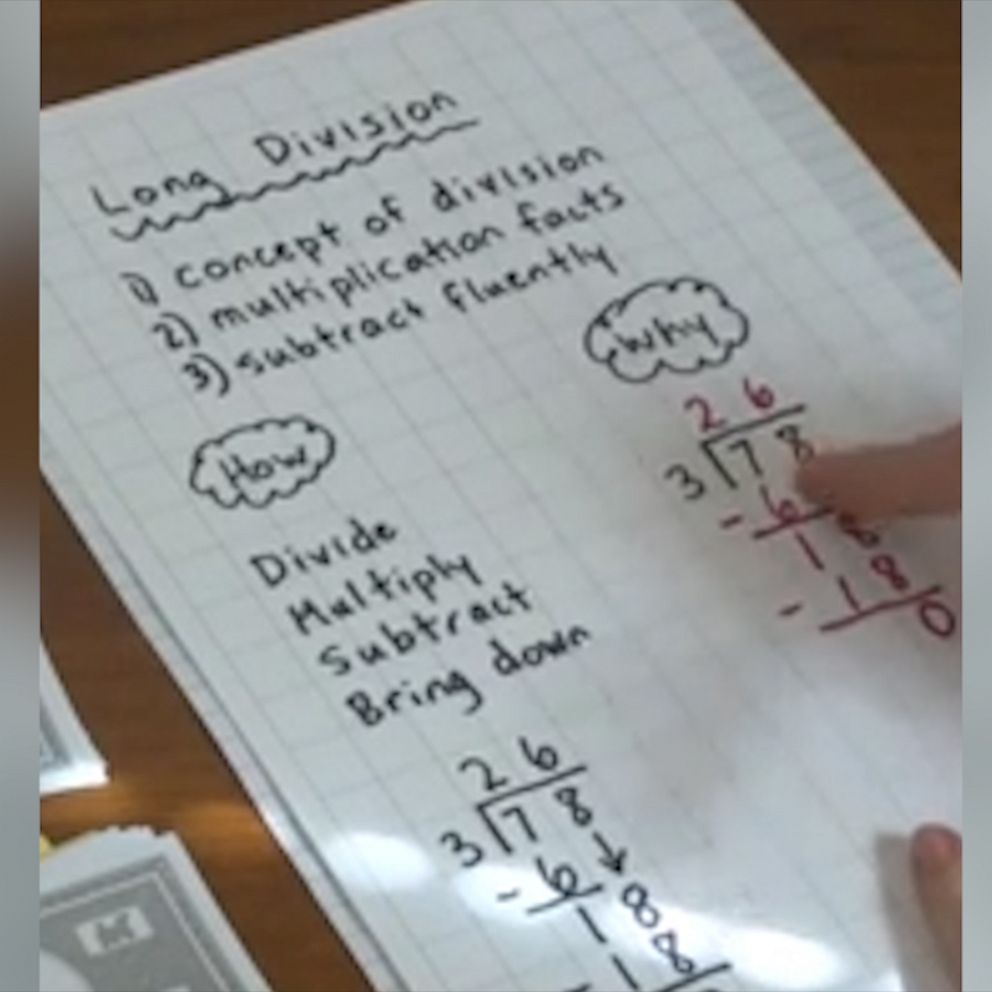As parents around the nation are suddenly placed in the role of a teacher, it seems many are struggling with one particular lesson: Long division. Google searches around the term spiked last week, the first week of homeschooling for many parts of the country.
Kate Snow is the author of the "Math Facts That Stick" series, "Preschool Math at Home" and "Kindergarten Math with Confidence." She writes at kateshomeschoolmath.com and she shared with "Good Morning America" her method for teaching long division using Monopoly money.
When I was an elementary school teacher, I always knew when it was long division week in the fourth grade. My normally positive, energetic colleagues would come to the staff room slumped over and exhausted, commiserating and complaining about the drudgery and frustration of teaching so many children this complicated process. I particularly remember the day when one reserved and quiet teacher demonstrated the “long division dance” that she’d created out of desperation to help her students learn the steps!
Even though long division can strike fear into the heart of veteran teachers, don’t despair. If you find yourself suddenly homeschooling long division, I have good news for you to keep in mind.
3 things to keep in mind to stay positive about long division
First, you only have to teach long division to one child at a time. (Maybe two if you have twins. But not 25 wiggly, distracted 10-year-olds.)
Second, if you use a hands-on approach, your child can not only learn how to do long division, but also why it works. This saves a lot of time in the long run. When kids understand what they’re doing, they remember the steps more easily, find their own mistakes, and can extend what they’ve learned to more complicated division problems.
Third, you probably already have the materials you need. Grab or print out some graph paper and play money (1s, 10s, and 100s), and you’re good to go. The graph paper will help your child keep the digits lined up, and the play money will help your child understand how each step in the process connects to real life.
Seeing the process in action in the video I created makes the process simpler.
Here are the essentials for you to refer to as you watch.
- Make sure your child understands the concept of division before you tackle the process of long division. Also double-check that your child already knows the multiplication facts and can subtract. Without these two subskills in place, your child will find long division especially tedious and frustrating.
- When you first start long division, use small, easy numbers. Dividing two-digit numbers by 2, 3, 4, or 5 is a great place to start.
- Frame the problem as several children sharing some money. Use your child’s friends’ or siblings’ names to make the problem concrete and easy to visualize. For example, for 78 ÷ 3, you might say, “Hannah, Nora, and Aiden had $78 to share.” Count out the corresponding amount of money (in 10s and 1s) and physically divide up the money into the correct number of piles as you work through the problem.
- Make a “cheat sheet” that lists the long division steps, and allow your child to refer to them as he or she works. The steps are: divide, multiply, subtract, bring down.
- Once your child can solve problems with two-digit dividends, gradually increase the difficulty to three-digit and four-digit dividends.
- Don’t expect that your child will master long division in a day. It’s a complicated process, and it takes most children a lot of practice and review to fully master.
Even if math wasn’t your best subject in school, you can teach your child long division. And with this hands-on approach, you won’t even have to make up a long division dance.






